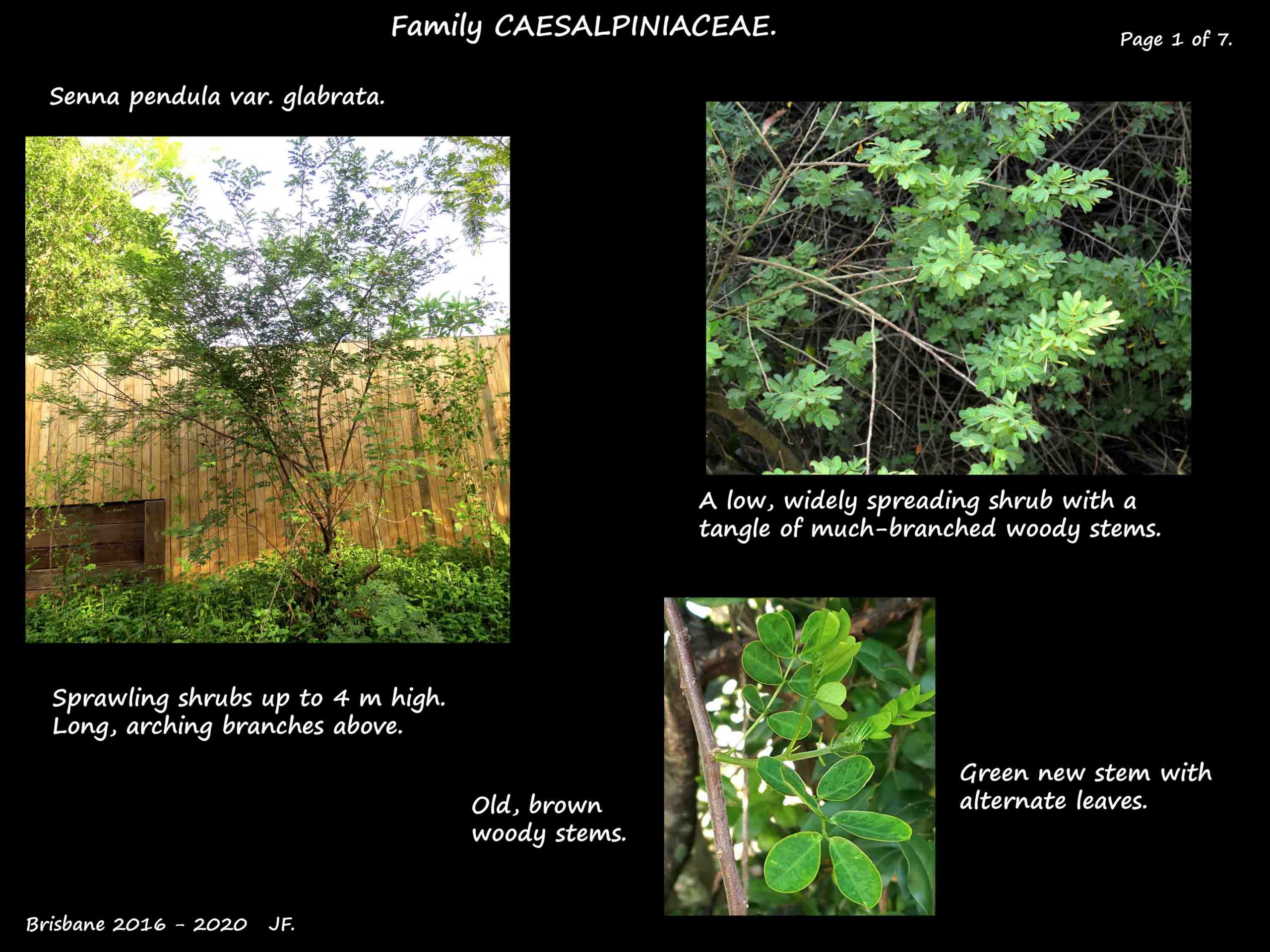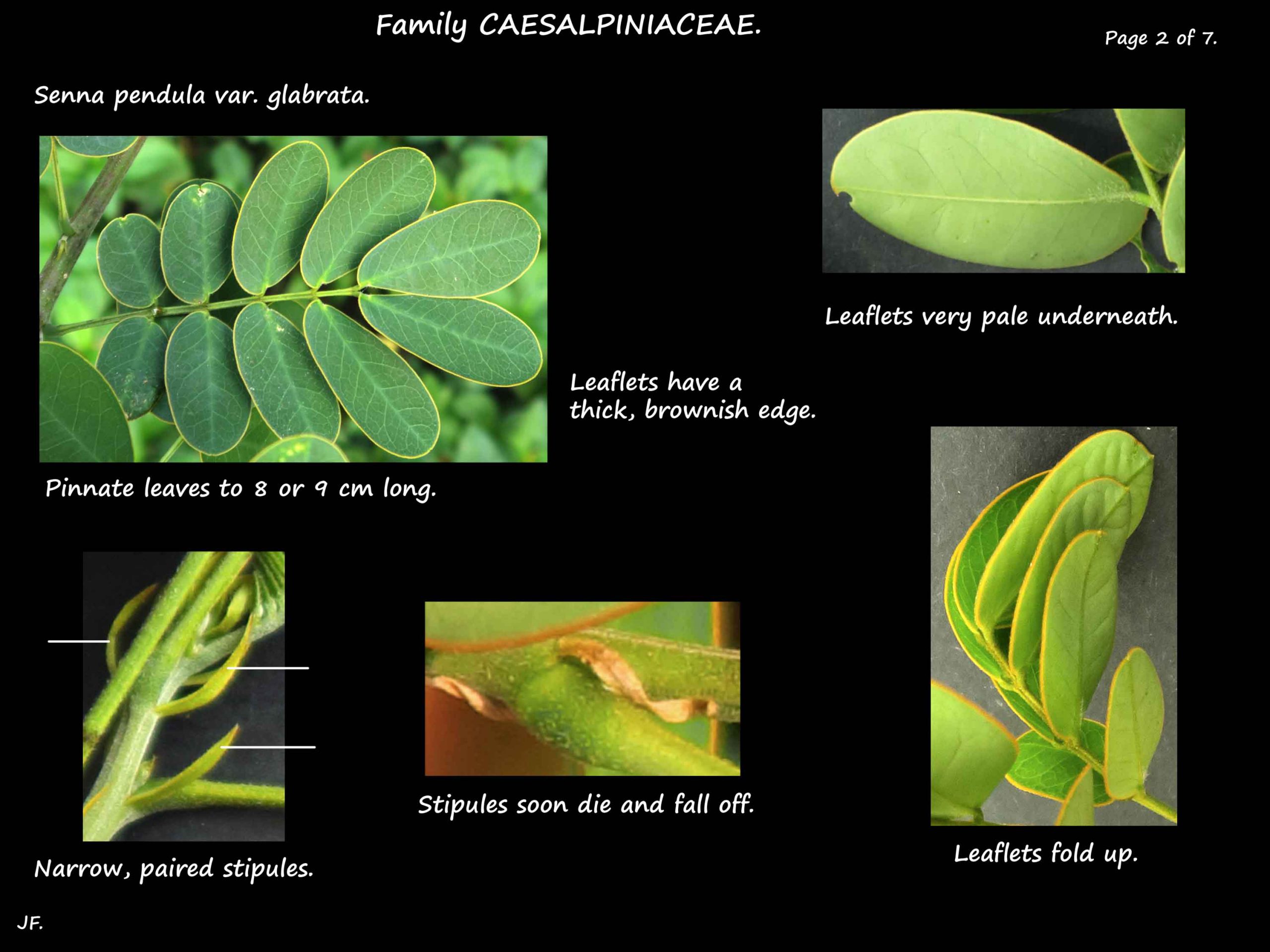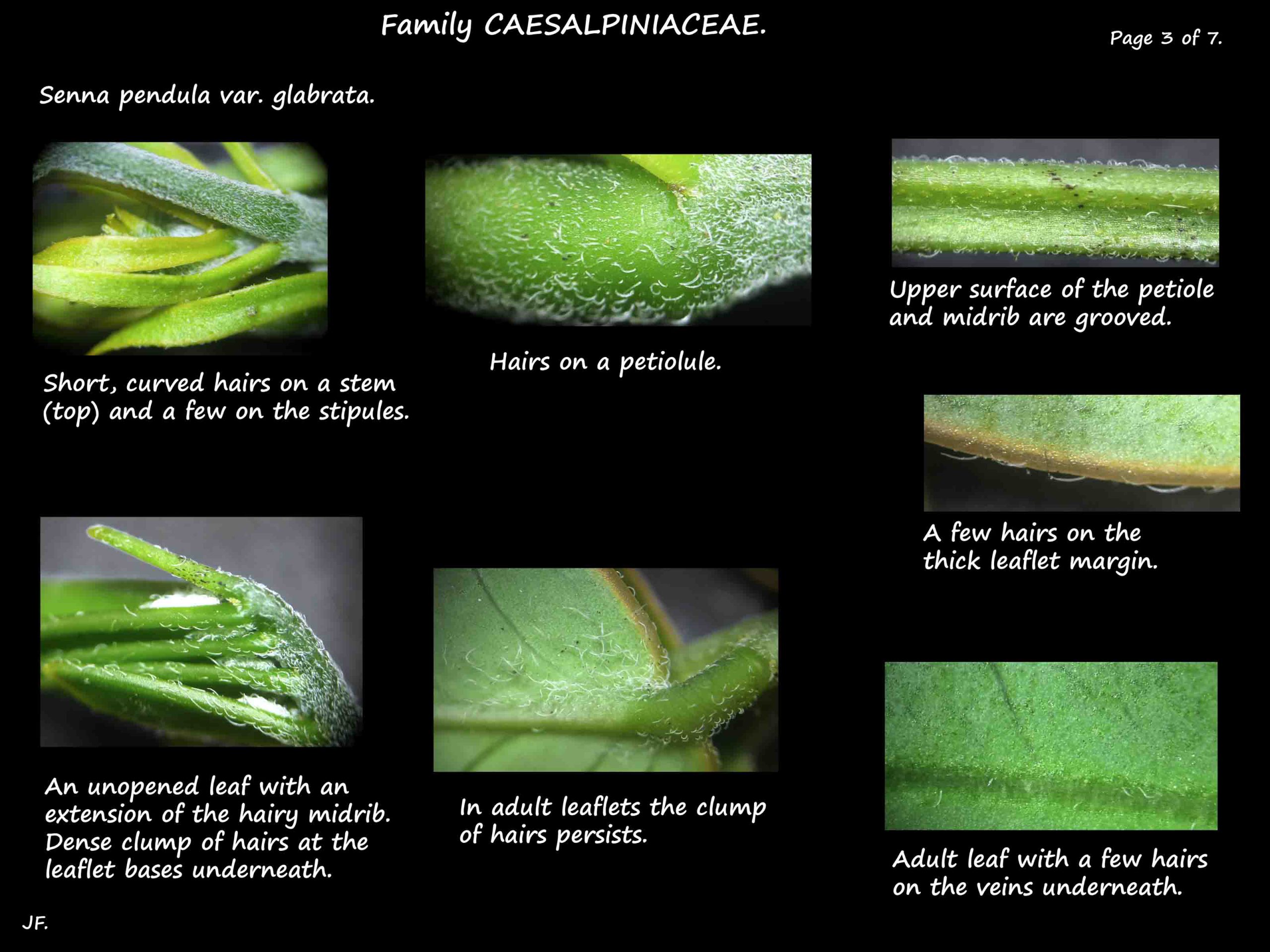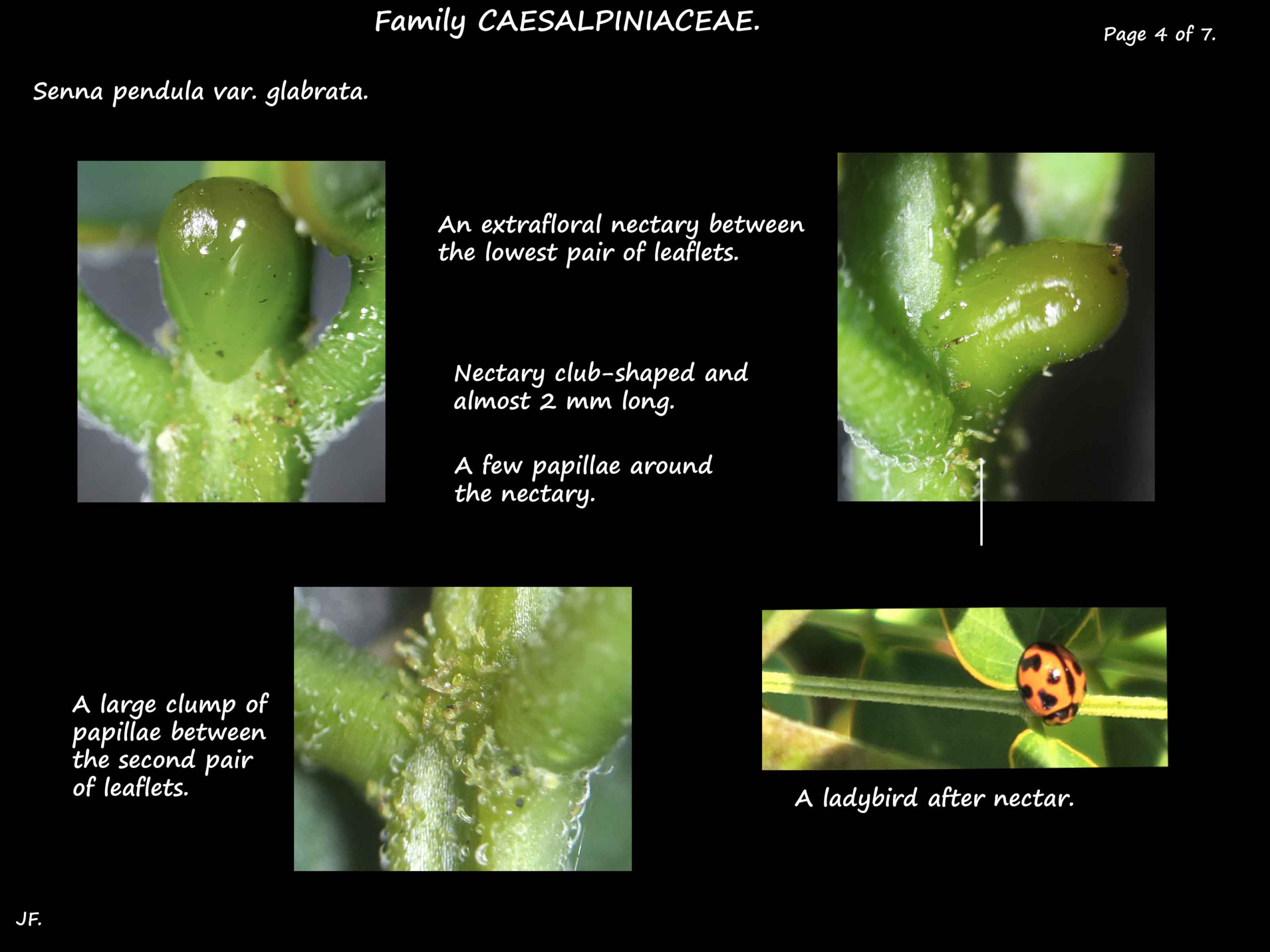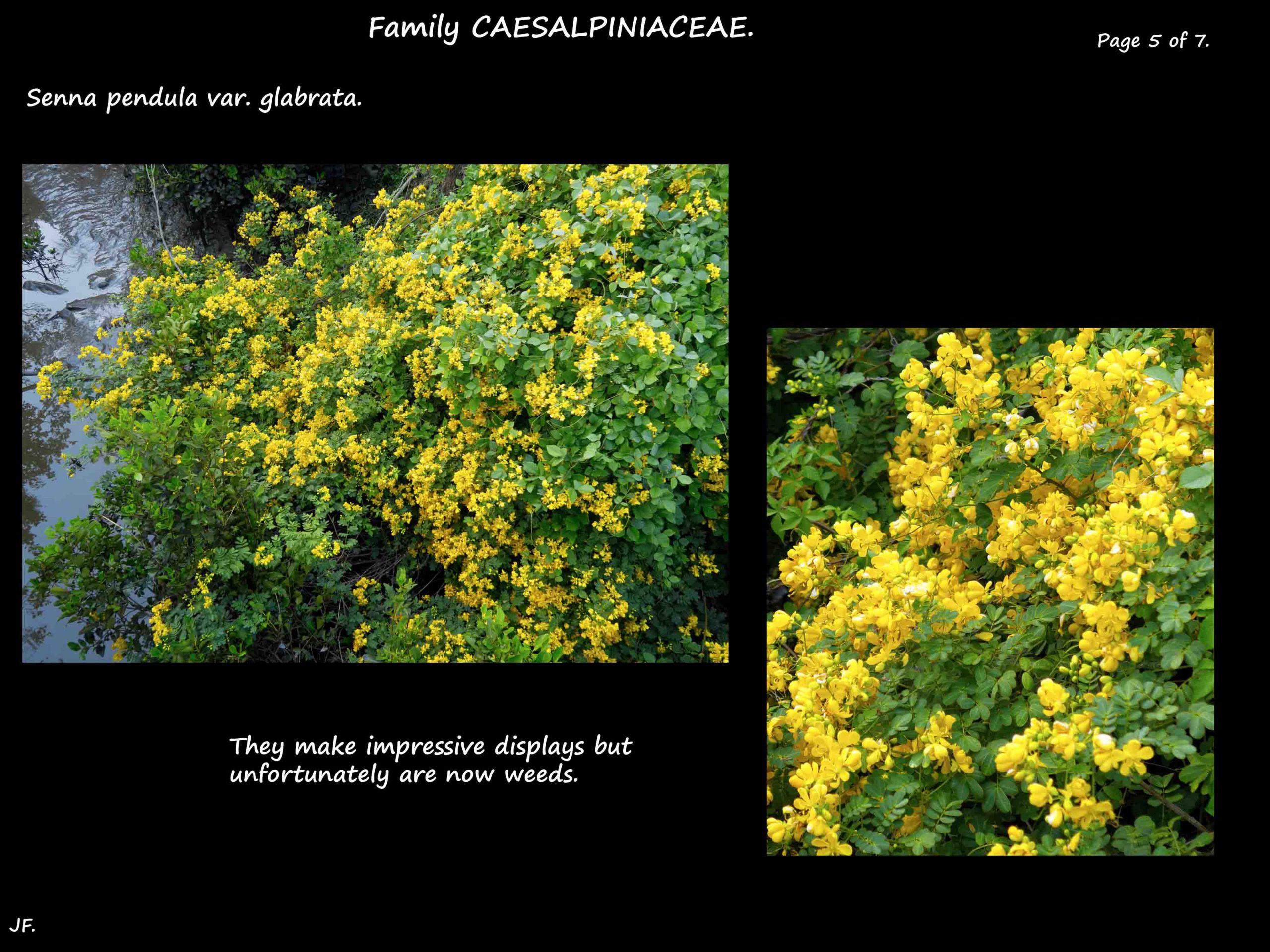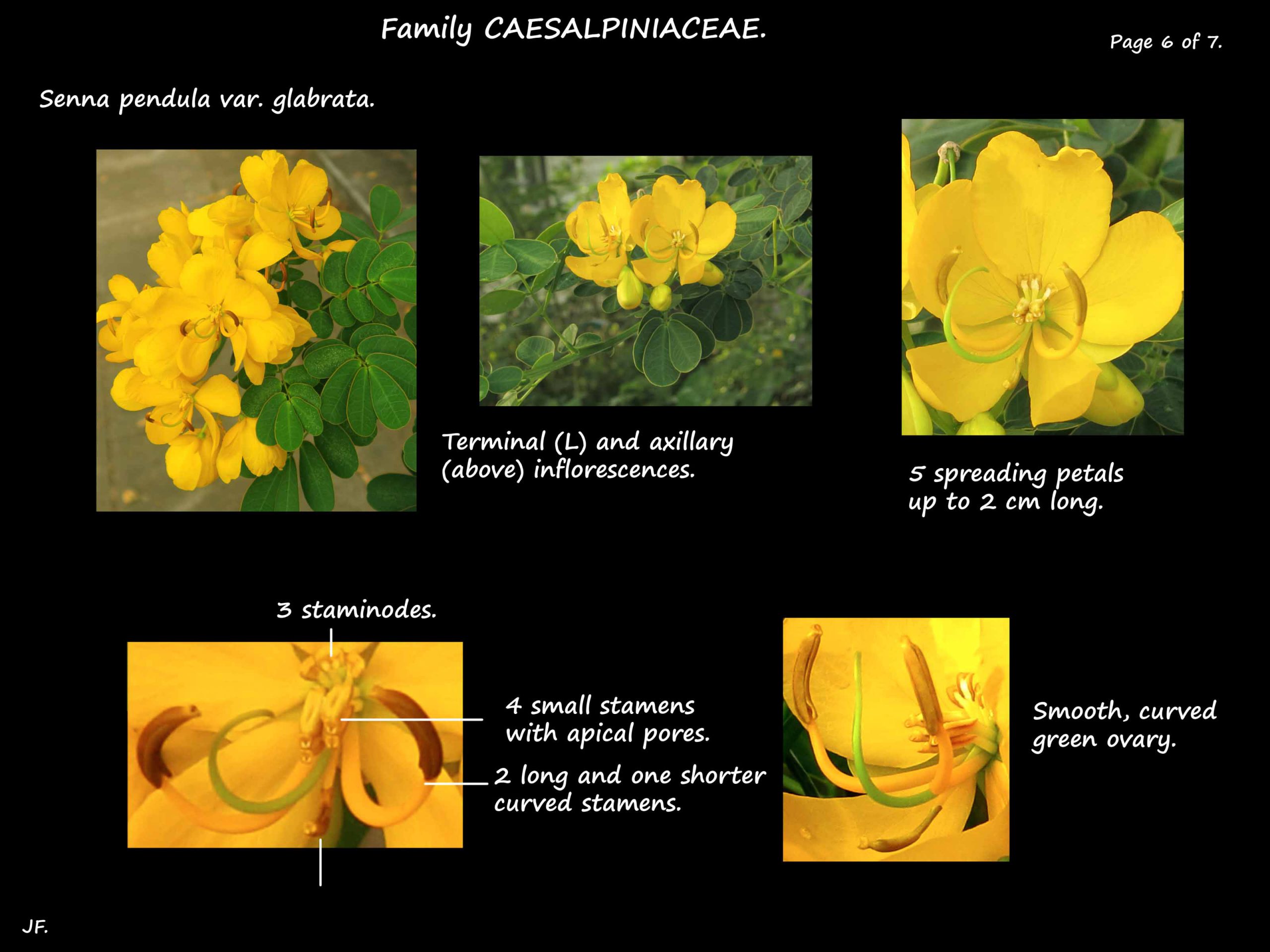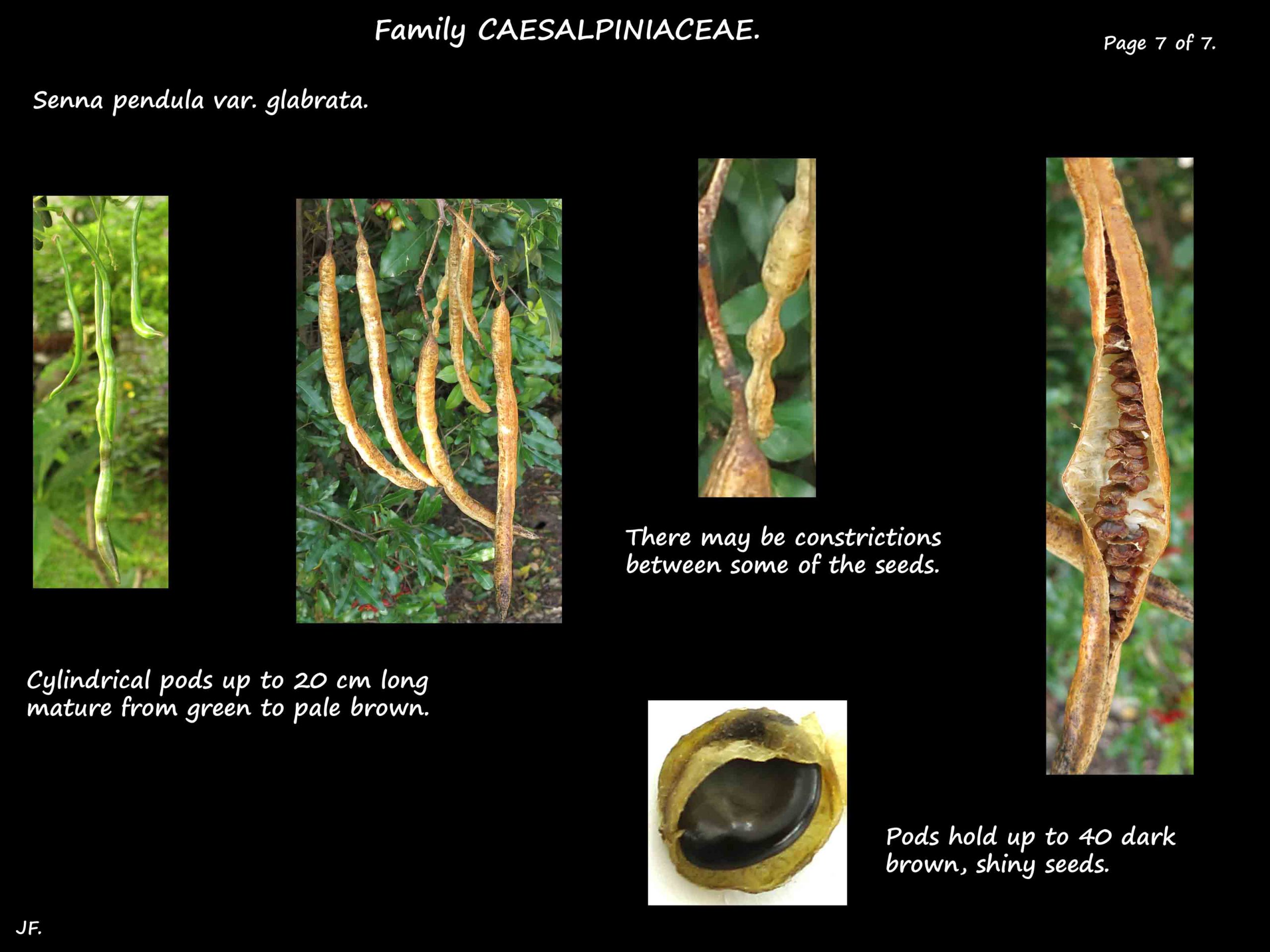Senna pendula var. glabrata.
Family Caesalpiniaceae.
Previously known as Cassia bicapsularis it is native to South America.
Common names include Easter Cassia or Winter senna.
Previously widely cultivated it has become naturalised, and a weed, in S. E. Queensland.
They are sprawling, much branched shrubs 2 to 4 m high.
There are some hairs on young green stems but not on older woody ones.
The alternate, pinnate leaves, including petioles 2 to 4 cm long, are 4 to 8 or 9 cm long.
The pair of narrow stipules at the petiole base fall off early.
Each leaf has 3 to 6 pairs of dark green leaflets.
Leaflets are 1 to 5 cm long and up to 2 cm wide with the shortest ones at the base.
The blade is ovate or obovate (widest above the centre) with a rounded tip.
The distinctive edge is a pale brown or yellowish colour.
Young leaves may have some hairs.
There is a club-shaped gland on the midrib between the lowest pair of leaflets.
Terminal or upper axillary inflorescences are branched clusters of up to 20 flowers.
The inflorescence stalk is up to 4 cm long and the flower stalks around 2.5 cm.
There are bracts that fall off early.
The flower parts are in 5’s.
The free sepals, with rounded tips, are a greenish-yellow.
The bright yellow, spreading petals are around 2 cm long.
There are 7 (6) fertile stamens and 3 (4) staminodes.
The staminodes are only a few mms long and there are 4 small stamens.
There are 3 prominent, curved stamens.
Two have 1.5 cm long filaments and anthers up to 8 mm long.
The lower, central one is shorter.
The anthers open via terminal pores.
The fruit are straight, cylindrical pods up to 15 or 20 cm long and 1 cm wide.
They may have constrictions between some of the seeds.
They mature from green to pale brown and hold up to 40 shiny, dark seeds.
J.F.
